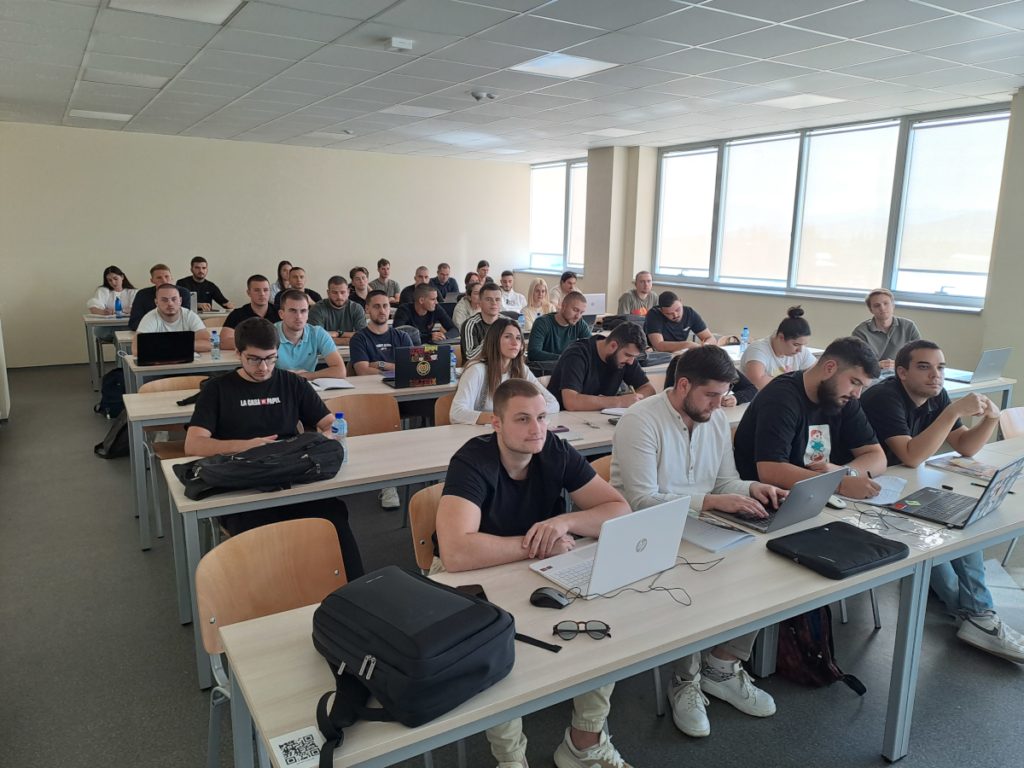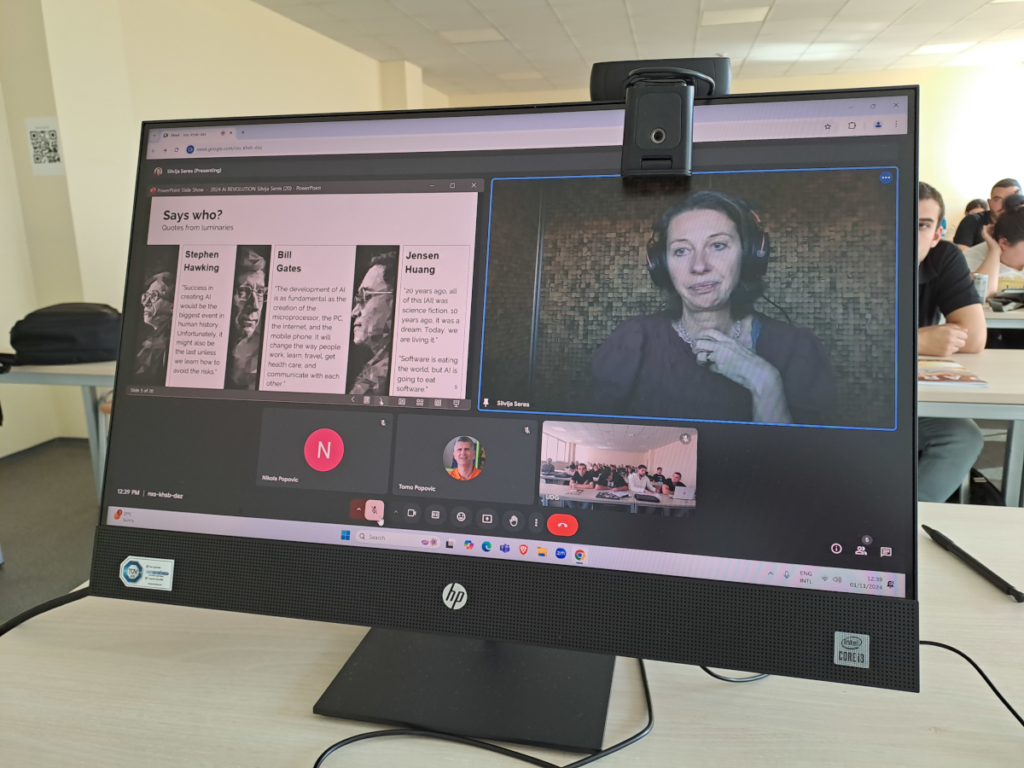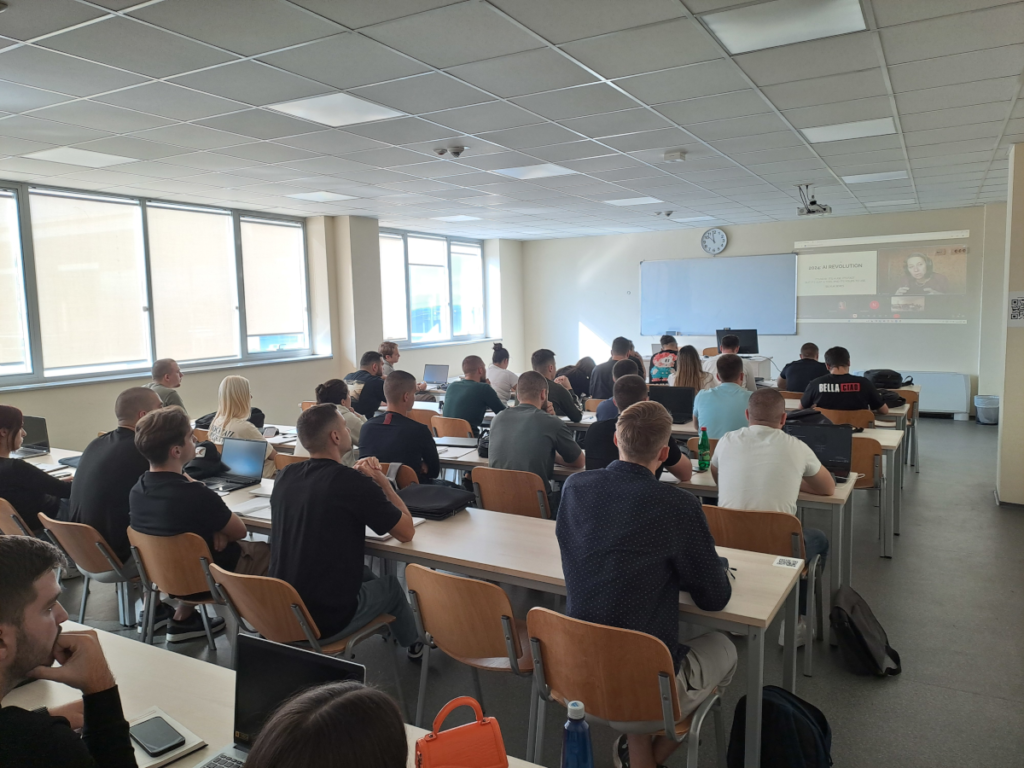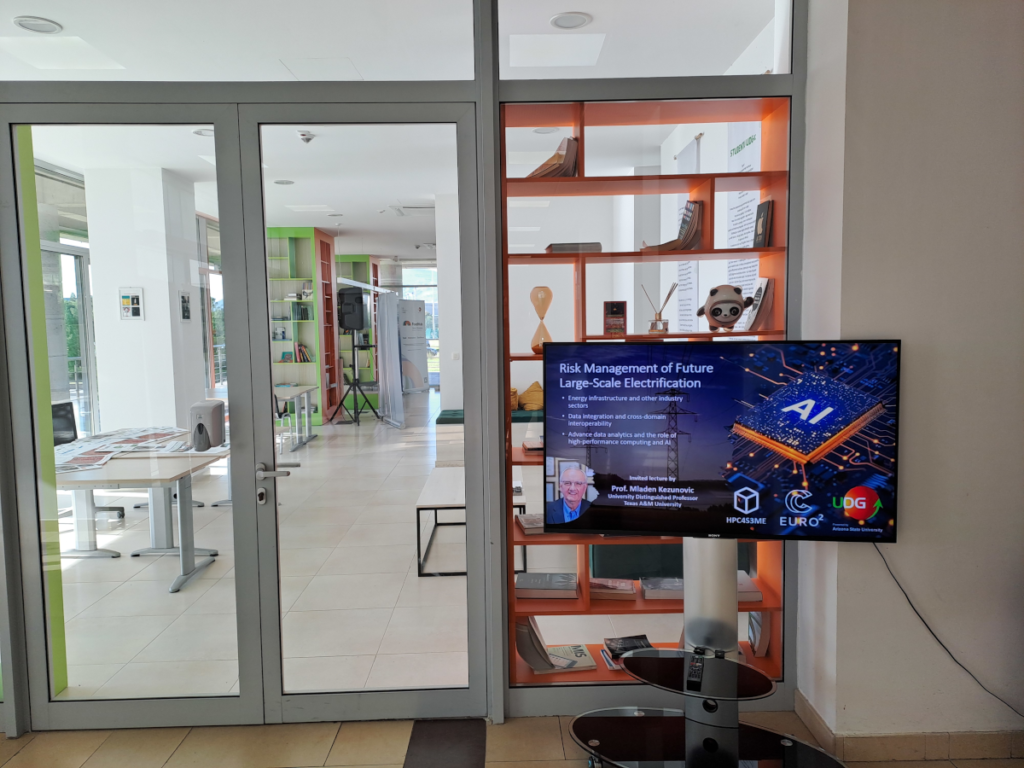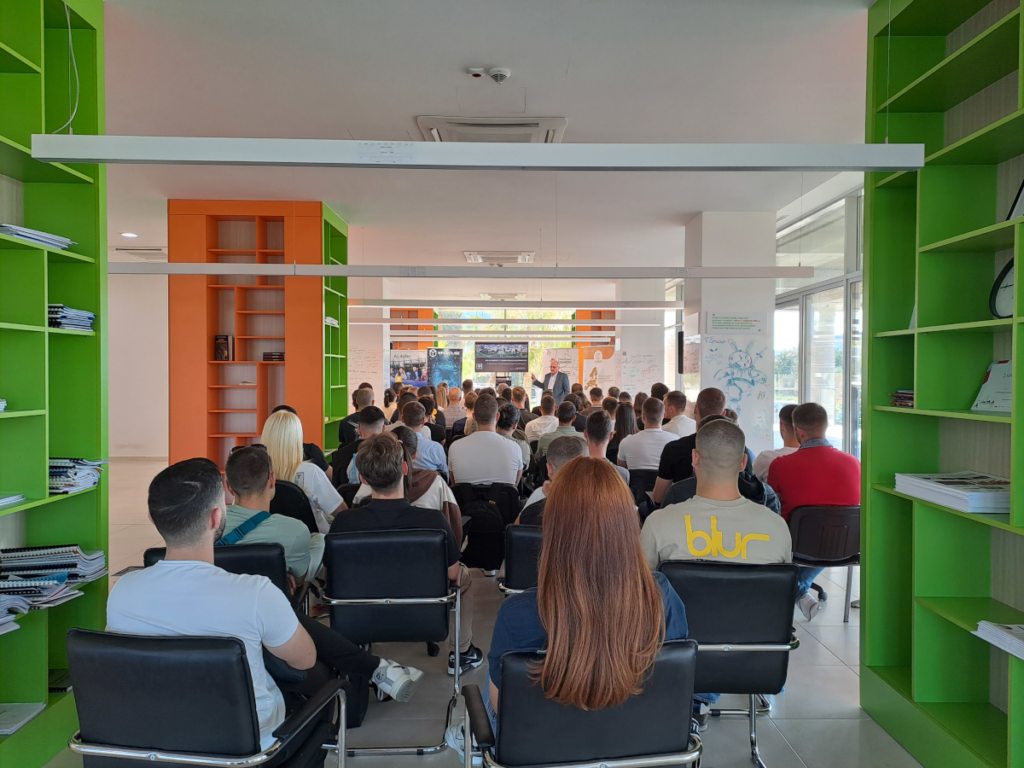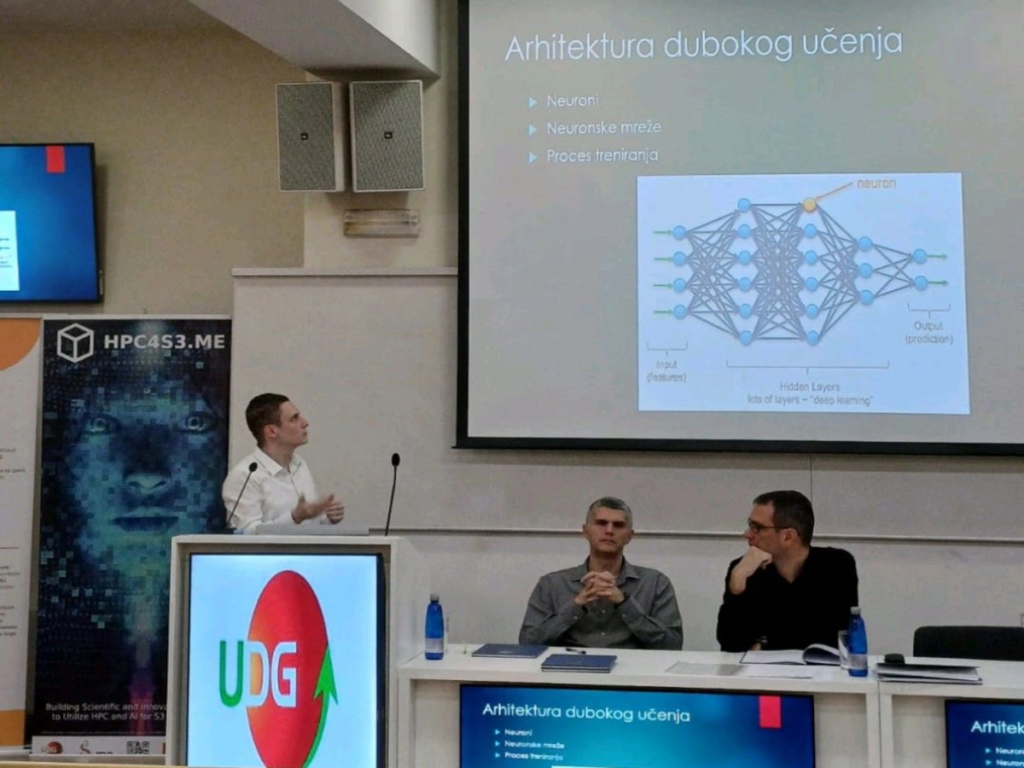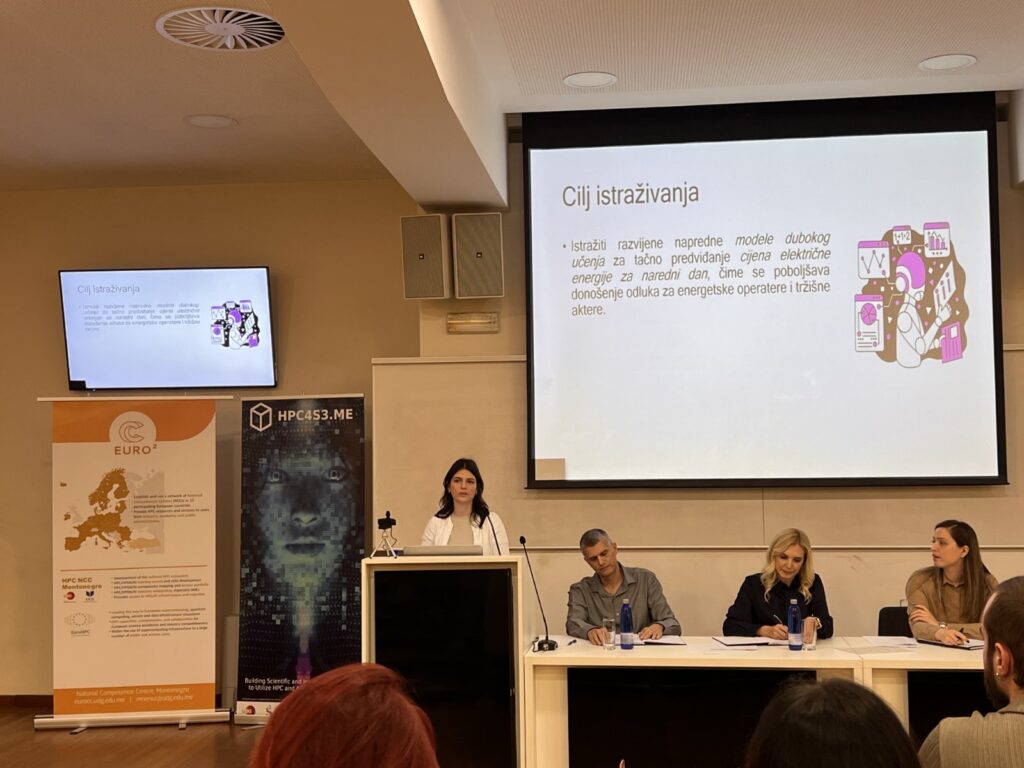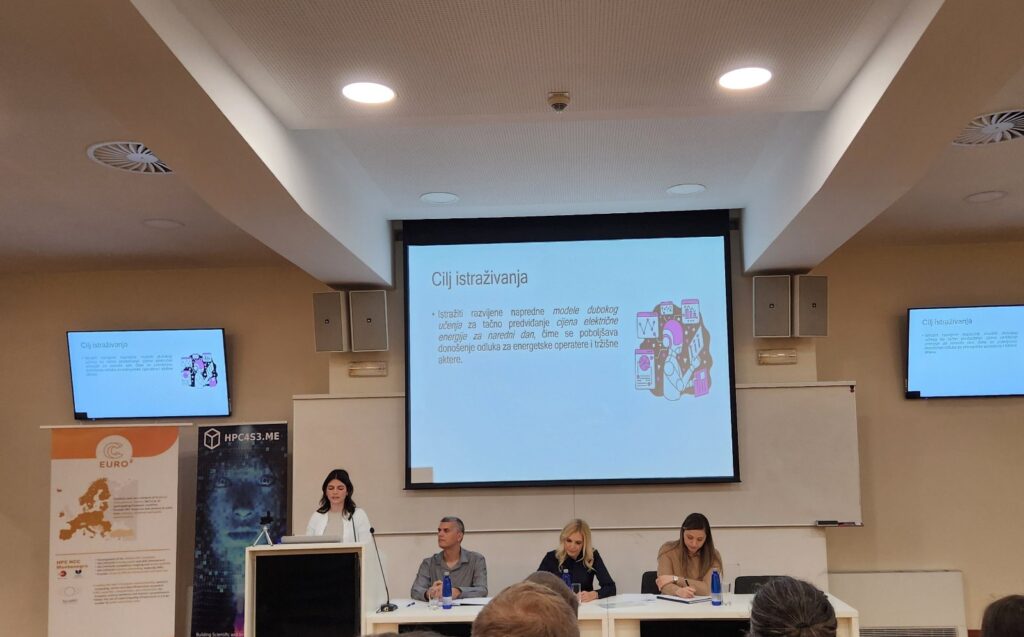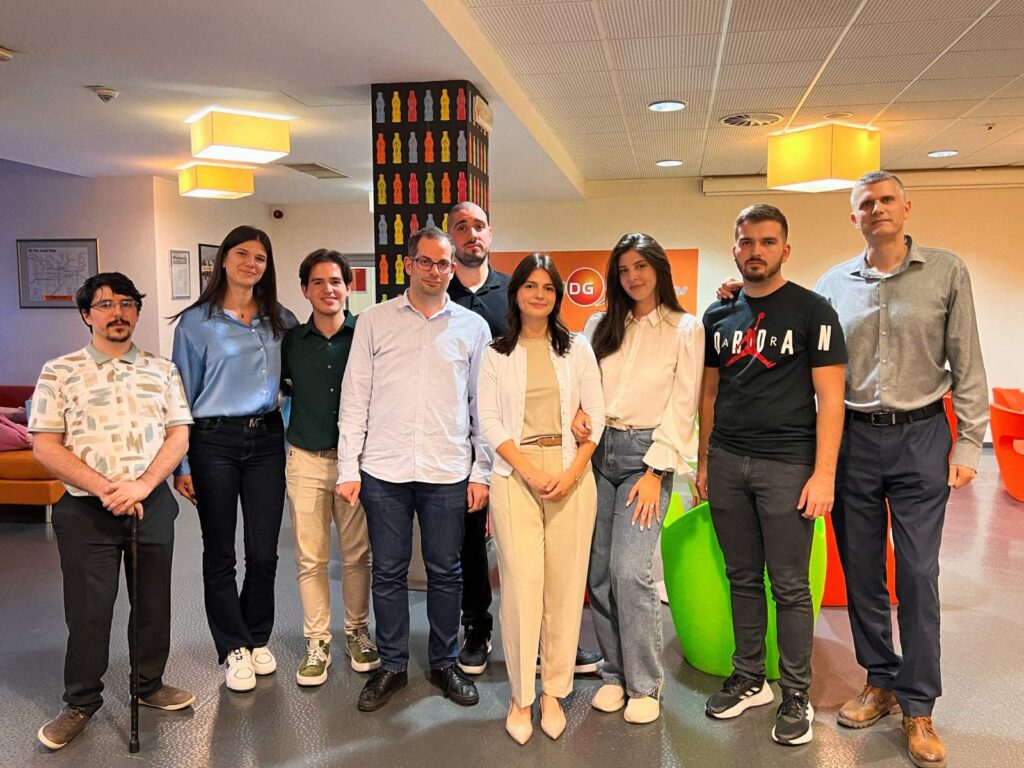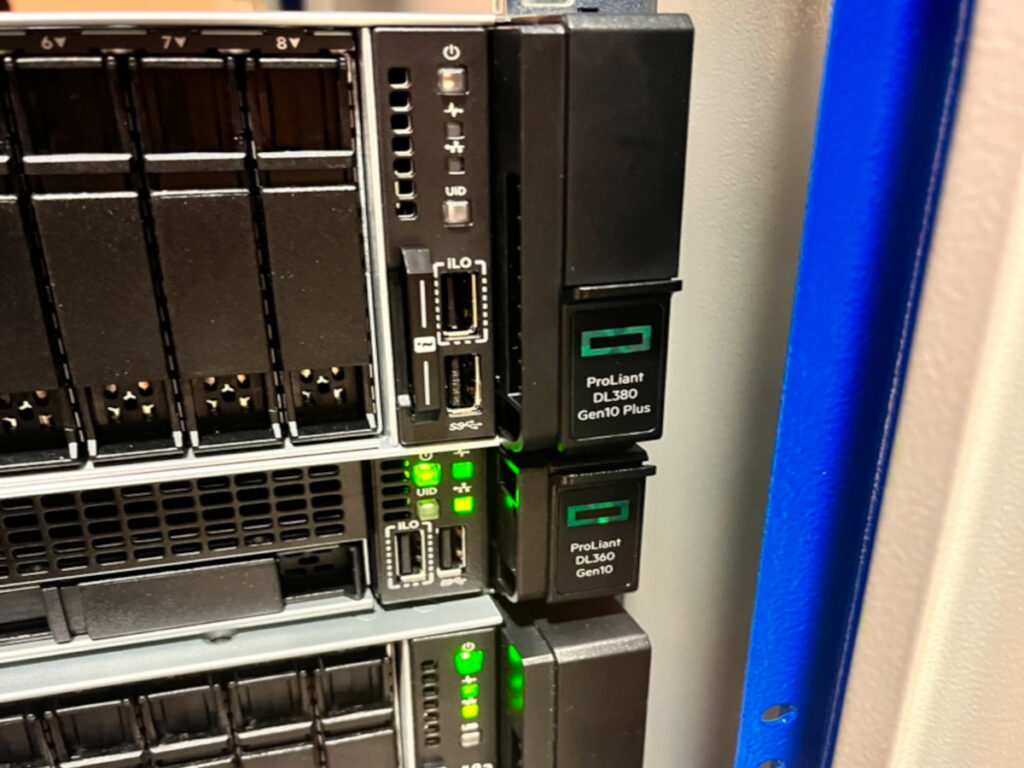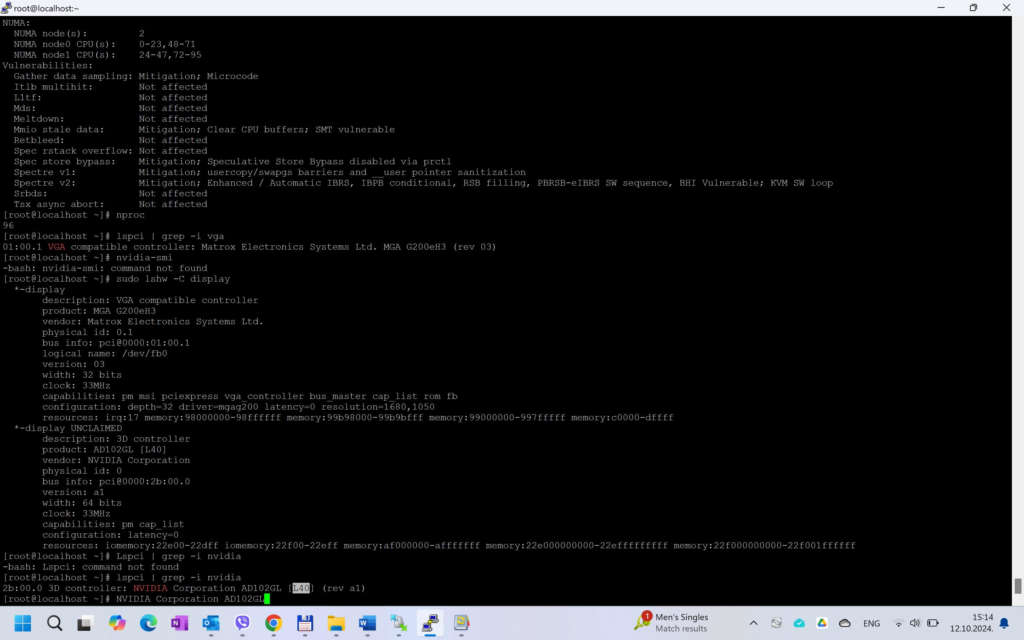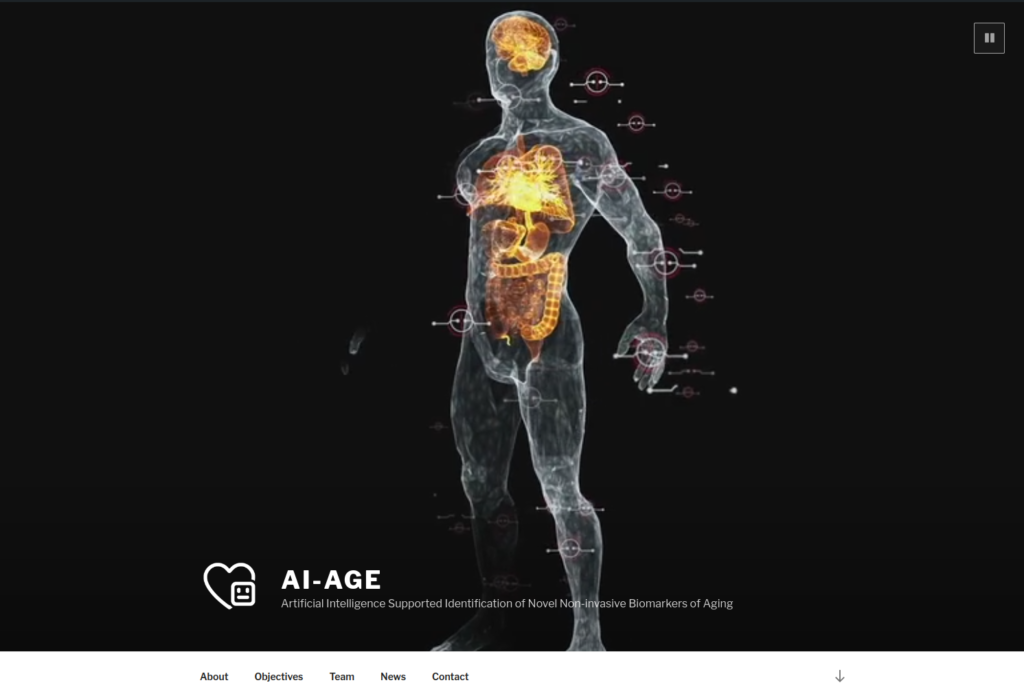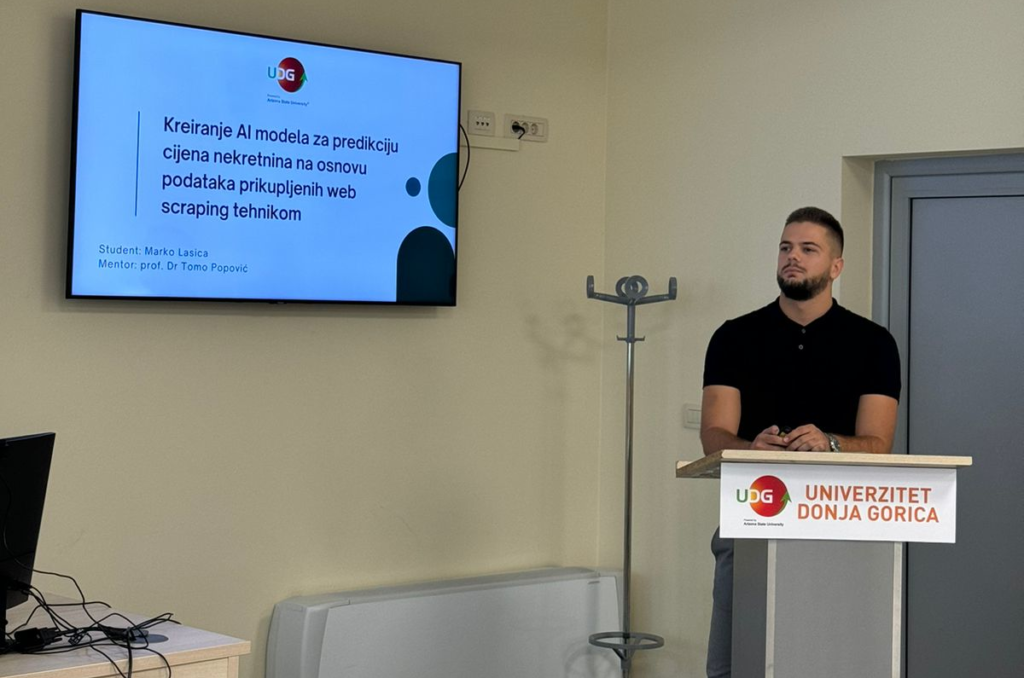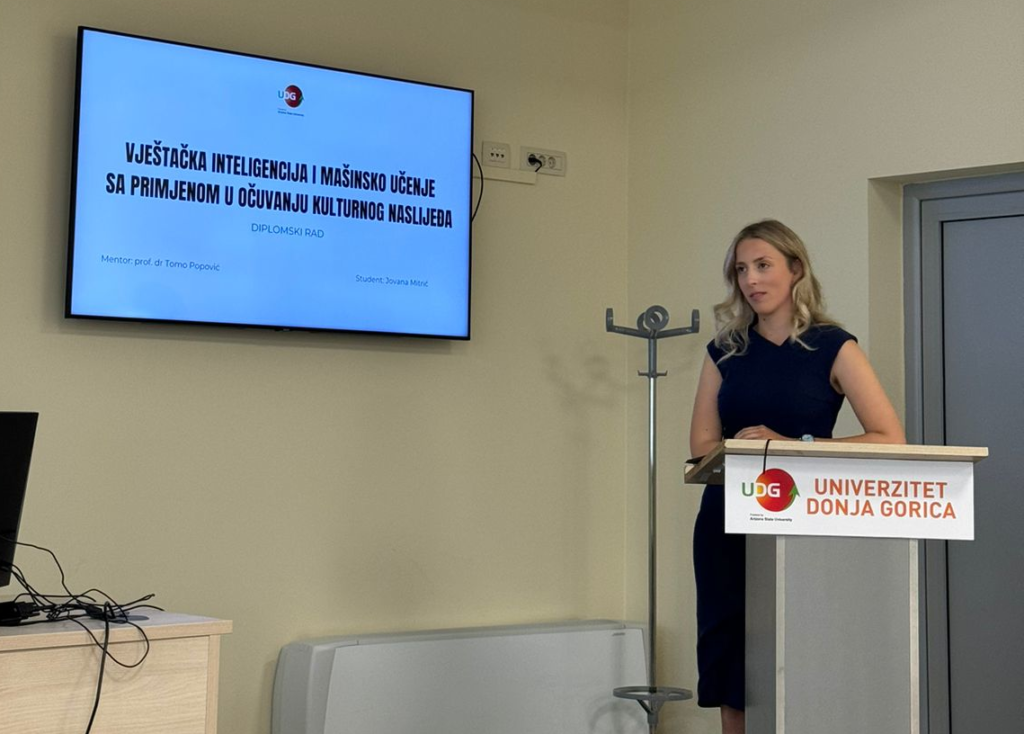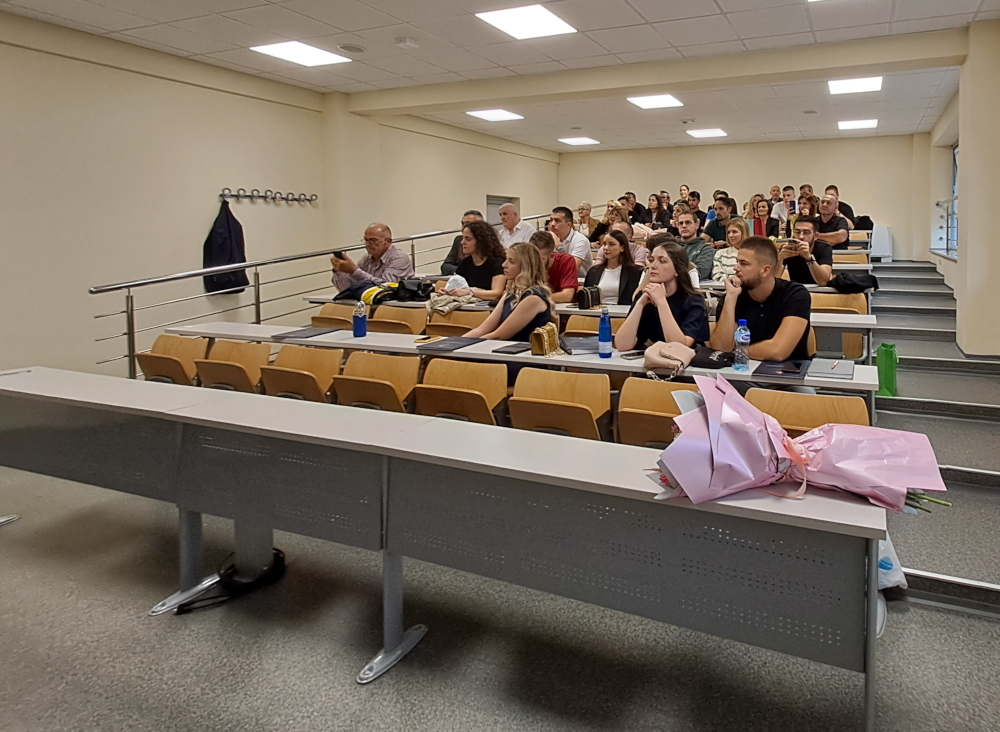We were privileged to host Dr. Silvija Seres, an esteemed thought leader in digital transformation, as part of our ongoing Digital Transformation course at the Faculty of Information Systems and Technologies. Her lecture provided profound insights into the current AI revolution, its critical role in shaping future industries, and its transformative impact on both personal and professional life. Dr. Seres shared valuable perspectives drawn from her global experiences, spanning across diverse fields and cultures. Her career path reflects an impressive journey through business innovation and technology, making her an inspiring figure for students and professionals alike. She spoke not only about the technical aspects of digital transformation but also about the need to maintain a life balance amid the fast-paced changes driven by AI and digitalization. She addressed challenges and opportunities specific to women in science and business, offering her own journey as a testament to the power of resilience and adaptability in traditionally male-dominated sectors.
The lecture was also a catalyst for dynamic discussions among students. They engaged with Dr. Seres on critical topics such as the importance of developing robust business models, defining a clear mission and vision, and securing investment to drive meaningful change. Her insights into the role of venture capital and other support mechanisms shed light on how businesses, especially tech-driven enterprises, can strategically position themselves in the market. This engaging session was a meaningful addition to the Digital Transformation curriculum, providing students not only with theoretical knowledge but also with real-world perspectives on what it takes to innovate and thrive in an era marked by rapid technological advancements.

About our lecturer: Successful developer of international technology companies, with focus on commercialization. Investor and board member, working with majors and startups in IT, finance, media and energy. Leader of large geographically distributed organizations in consulting, marketing and services. MSC Computer Science (Oslo), MBA (INSEAD), PhD Mathematical Sciences (Oxford University). International profile, with five languages and extensive living and working experience worldwide. Link: https://silvijaseres.com/
